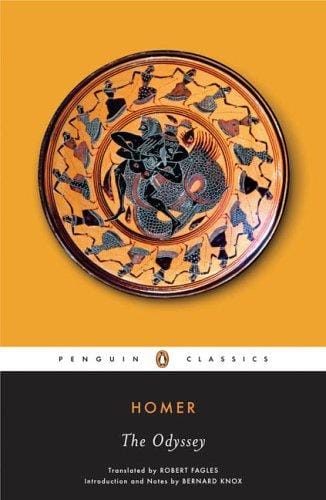The Odyssey (Penguin Classics): A Modern Reader’s Guide to Homer’s Epic
Explore themes, plot, characters and the value of Penguin Classics’ translation of Homer’s The Odyssey in our concise 800-word guide.

Introduction: Why Revisit Homer Today?
Few works have shaped Western storytelling as profoundly as Homer’s Odyssey. Composed nearly three millennia ago, the poem continues to inspire novels, films, and even video games. What keeps readers turning its pages? The answer lies in the narrative’s universal themes—homecoming, resilience, identity, and hospitality—that feel as urgent in the 21st century as they did in ancient Greece. Picking up the Penguin Classics edition allows modern audiences to experience those themes through a clear, contemporary lens without sacrificing the grandeur of the original epic.
About the Penguin Classics Edition
Penguin Classics has long been the go-to series for accessible yet scholarly translations of canonical texts. The Odyssey is no exception. Edited with an authoritative introduction, notes, and maps, this paperback balances readability with rigorous academic backing. Translator Robert Fagles, acclaimed for his muscular but lyrical prose, preserves Homer’s poetic energy while clarifying archaic idioms. The edition’s supplemental essays situate the poem in its historical context, helping newcomers appreciate the oral tradition, meter, and mythology that underpin every line.
Plot Overview: A Journey Like No Other
The epic opens not with the Trojan War itself but with a crisis on Ithaca. Odysseus has been missing for ten years, and rival suitors occupy his palace, pressuring his wife Penelope to remarry. Meanwhile, Odysseus languishes on Calypso’s island, yearning to return home. Guided by the goddess Athena, he sets off on a perilous voyage that features encounters with the Cyclops Polyphemus, the witch-goddess Circe, deadly Sirens, and vengeful sea monsters Scylla and Charybdis. His voyage is both physical and psychological, testing his cunning, moral compass, and endurance. Parallel to Odysseus’s travels, his son Telemachus embarks on a coming-of-age journey, seeking news of his father across Spartan and Pylian courts. Ultimately, father and son reunite, defeat the predatory suitors, and restore order to Ithaca, offering a cathartic resolution that celebrates familial loyalty and divine justice.
Key Themes That Resonate Today
Nostos (Homecoming): Odysseus’s overarching objective of returning to Ithaca encapsulates the human longing for belonging. Whether you are an expatriate or a digital nomad, the pull of “home” remains universally relatable.
Xenia (Hospitality): The poem repeatedly rewards or punishes hosts and guests based on their adherence to this code. In an era of global travel and migration, The Odyssey continues to provoke questions about how we treat strangers and refugees.
Identity and Storytelling: Odysseus frequently disguises himself and tells elaborate tales, underscoring the fluid nature of identity. In the age of social media personas, the theme feels uncannily modern.
Resilience Amid Chaos: From storms conjured by Poseidon to emotional storms within his own psyche, Odysseus’s survival underlines the importance of resilience when facing unpredictable challenges—an inspiring reminder for readers navigating today’s volatile world.
A Living Text for a Modern Audience
Because Penguin’s translation captures the music of Homer’s Greek while modernizing vocabulary, the themes leap off the page instead of hiding behind archaic phrasing. Fagles’s use of vivid imagery—wine-dark seas, rose-fingered dawn—offers a poetic cadence that feels alive, making it easier for readers to draw parallels with contemporary life. Classroom discussions often pivot from Odysseus’s wanderings to current issues like veteran reintegration, corporate travel fatigue, or even space exploration, demonstrating the epic’s boundless relevance.
Major Characters Worth Knowing
Odysseus, the “man of twists and turns,” exemplifies strategic intelligence, at times blurring ethical lines to achieve survival. Penelope embodies patience and ingenuity, weaving and unweaving her loom to delay remarriage. Telemachus provides a portrait of youthful uncertainty evolving into confident leadership. The gods—Athena, Poseidon, Zeus—represent the capricious forces that shape human destiny. Rounding out the cast are unforgettable figures like loyal swineherd Eumaeus, the treacherous suitor Antinous, and the seductive yet sorrowful nymph Calypso. Each character adds texture, illustrating the spectrum of human and divine motivations.
What Sets This Translation Apart
While numerous English versions of The Odyssey exist, Penguin Classics distinguishes itself by balancing fidelity with fluency. Fagles retains Homer’s repeated epithets and formulas, preserving oral-poetic flavor, but arranges them in free-flowing lines that read like contemporary verse. Academic notes clarify cultural references without interrupting the narrative flow. Furthermore, the introduction delves into archaeological evidence and comparative mythology, enriching the reader’s interpretive toolkit. Together, these features make the edition suitable for both casual readers and university courses.
Tips for Reading The Odyssey Successfully
1. Skim the introduction after reading the first two books to avoid spoilers yet gain context.
2. Use the character list and maps provided; they transform complex genealogies into digestible snapshots.
3. Read aloud occasionally. Homer’s lines were intended for performance, and the rhythm becomes palpable when vocalized.
4. Reflect on the modern parallels. Keeping a journal of personal reactions turns the epic into a mirror for your own journey.
5. Don’t rush. Breaking the poem into its 24 books across two weeks allows themes to marinate between sessions.
Ideal Audiences and Classroom Appeal
The Odyssey suits high-school students embarking on their first classical text, undergraduates comparing world epics, and lifelong learners seeking literary enrichment. Its narrative momentum and fantastical episodes also attract fans of speculative fiction and myth-based films. For educators, the Penguin Classics edition provides a ready-made framework of notes, making lesson planning straightforward while encouraging interdisciplinary approaches spanning history, psychology, and comparative religion.
Conclusion: A Journey Worth Taking
The Odyssey has endured because it is, at heart, a story about finding one’s way through an unpredictable world. The Penguin Classics edition ensures that this ancient map of the human spirit remains legible and inviting. Whether you read it to explore foundational myths, sharpen critical thinking, or simply enjoy an engrossing adventure, this translation offers a passport to one of literature’s greatest voyages—no ship required.



